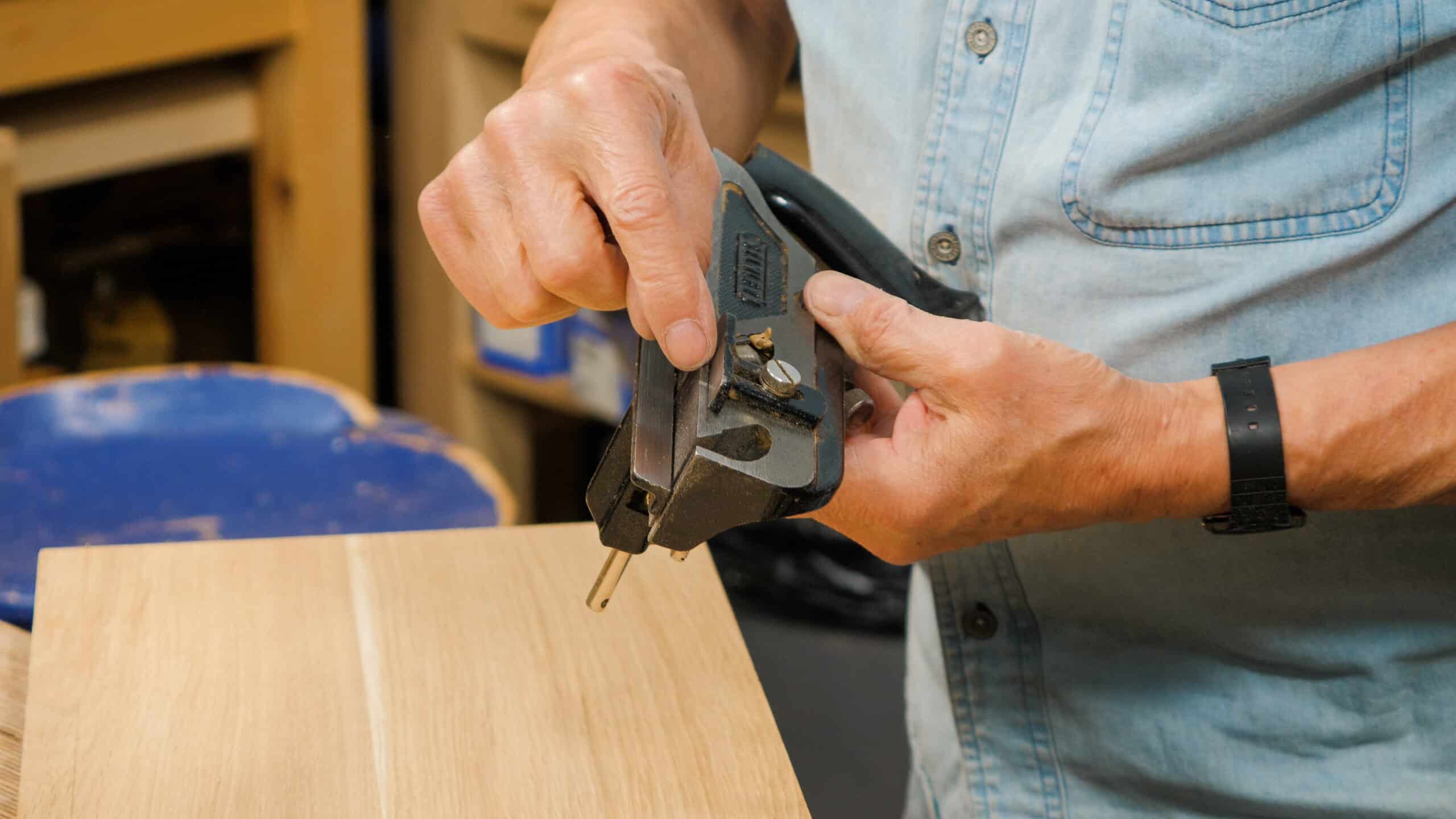Sellers Home Drinks Cabinet: Episode 1
Posted 22 June 2022
This is an episode in a paid series. Want to watch it? You just need to sign up as a paid member, and you can enjoy this video and many other videos we think you will love.
This is a brand new project to make a wall-hung cabinet with double doors and a drawer in solid oak. This is a project that comes together quickly and is perfect for learning the methods and techniques for cabinet making by hand methods. We start with the rough-sawn wood and prepare the stock for edge-jointing and panel making. In this project, we use a rebate (rabbett) plane to create a step-down to the dovetails and a door rebate to receive the doors. Truing up the wood and then surfacing the panels ready for joinery can be daunting but following the patterns we use ensures a successful outcome. At the end of this episode, we will have all of the layout done for dovetailing all four corners of the cabinet.


Whoa, you had me worried when you first entered the shop. I was thinking, “Gosh, now Paul’s drinking wine while he works.”
When using a no 80 to remove torn grain do you have to worry about removing too much material and leaving a noticeable low spot, or is it removing such thin shavings it isn’t noticeable over the length of a board?
I asked Paul and this was his reply:
“It’s about the thinnest shaving you can get and as I have written and explained in other places. The fault is not the low spot the fault is the surrounding area. Focus mainly on the surrounding area and this will make you lower and you will only need a few swipes in the remaining section.”
Thanks Paul for your comments on the cross grain rebates and the tool. I had struggled to get good cross rebates with the tool. You gave several great tips on how to make the cross rebates that I will for sure incorporate into my woodworking. I had come to dislike this cross grain rebate tool so much that I had stopped using it and had just used the hand router plane. That works but it can be a bit slow on longer rebates. If you were looking for a YouTube video on another tool to share more detail, what you outlined here would make a great basis for that video on the cross rebate tool. I haven’t seen anyone talk as thoroughly and succinctly about it elsewhere (and I have looked).
Do we have a drawing for this project?
Thanks in advance
I am also waiting for the drawing so I can start make this
A good start to a beautiful cabinet.
I enjoy the larger dovetail cabinet projects, looking forward to see this through.
Just wondered about the marking out of dovetails, as I have seen Paul in the past mark the first face and then transfer these across to other pieces, instead of measuring and marking each tail on every side.
Can we get atleast the cut part list so we can start working on this one?
Intervals. The word I believe you were searching for is “intervals”. I hate when words escape me.
Paul, I’ve noticed from your projects that you do not create “sprung” edge joints. I’ve read a number of woodworking books and watched some videos and occasionally read and saw makers advocate for sprung edge joints. What, if any, utility and necessity is there for “sprung” edge joints?
I really can’t work without a drawing Paul.
same here
I really loved the long silent section at the beginning, and seeing Paul think through the design process. BBC4 had an hour-long film of a woodworker with no music and no dialogue (proving that there iS demand for this kind of thing), but it wasn’t as good as Paul’s version, because one didn’t learn much from the BBC4 woodworker.
Eric do you remember what this programme was called? I’d love to see it but couldnt find anything googling BBC4 woodwork. Cheers
I find that as long as a video doesn’t purport to teach you something, if the video is just watching a woodworker work wood, that muting the audio is also a good way to focus on what is being done, rather than what is coming out of the speakers. Search youtube for ‘Båtbyggeri’ and watch the video by Åke Palm, or the ‘Just another dovetail video’ from Fine Woodworking.
Maybe we should have a thread for speech and music free videos here….
The nicker never does exactly what I expect it to on my Stanley rebate plane. And I have to watch that the fence doesn’t inadvertently change – tightening every 3 or 4 passes is definitely required!
wnwlthspbfde
It seems to be a good practice to pare down the outcut surface slightly with a chisel when cutting cross-grain rebates so that the rebate plane doesn’t break off the edge. I have found the same things occur with my Woden 78 as you have experienced: the shavings jam in the throat, the depth shoe and the fence creep out of position, and the nicker isn’t very good at scoring the wood fibres. Also, you have to clean out the corner of the rebate by other means because you don’t get a sharp square corner from the plane. Keep a box of plasters nearby, too.